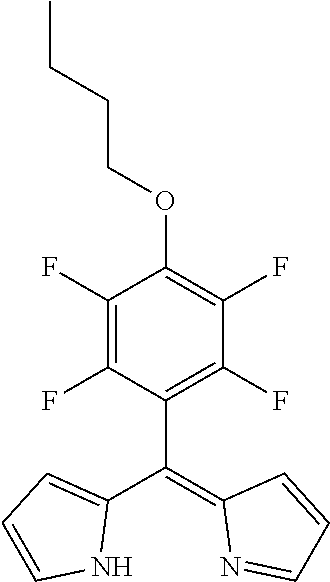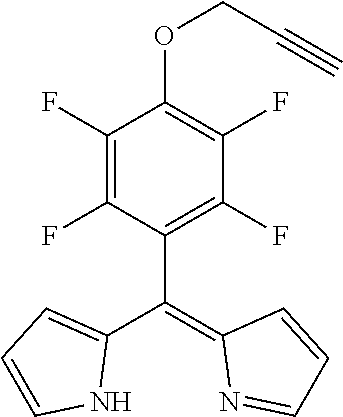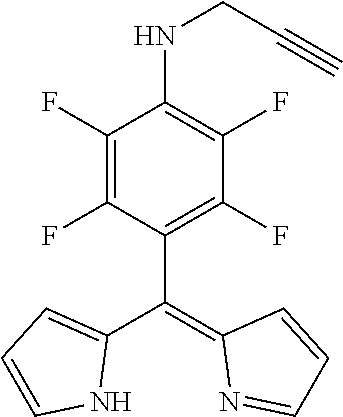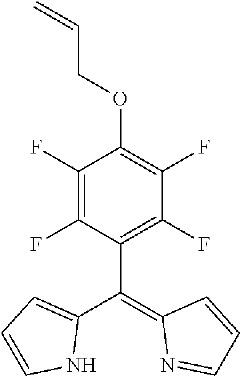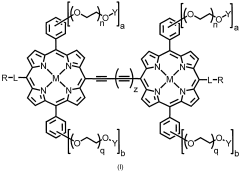Artificial Photosynthesis-driven healthcare innovations.
SEP 4, 20259 MIN READ
Generate Your Research Report Instantly with AI Agent
Patsnap Eureka helps you evaluate technical feasibility & market potential.
Artificial Photosynthesis in Healthcare: Background and Objectives
Artificial photosynthesis represents one of nature's most elegant and efficient processes, wherein plants convert sunlight, water, and carbon dioxide into energy-rich compounds and oxygen. This fundamental biological mechanism has inspired scientists for decades to develop synthetic systems that mimic this natural process. The evolution of artificial photosynthesis technology has progressed from basic understanding of natural photosynthetic mechanisms in the early 20th century to the development of sophisticated catalytic systems capable of water splitting and CO2 reduction in recent years.
The trajectory of artificial photosynthesis research has seen significant acceleration since the 1970s energy crisis, which highlighted the need for sustainable energy alternatives. By the early 2000s, nanotechnology advancements enabled more efficient light-harvesting materials, while the 2010s witnessed breakthroughs in catalyst design and system integration. Most recently, the field has begun exploring applications beyond energy production, particularly in healthcare—representing a novel and promising technological frontier.
The convergence of artificial photosynthesis with healthcare innovations aims to leverage the unique capabilities of photosynthetic systems for medical applications. These include oxygen generation for therapeutic purposes, production of high-value pharmaceutical compounds, development of biohybrid materials for tissue engineering, and creation of self-sustaining implantable medical devices.
The primary objectives of artificial photosynthesis in healthcare include developing systems capable of in situ oxygen generation for hypoxic tissues, creating sustainable bioproduction platforms for pharmaceuticals, engineering light-responsive biomaterials for controlled drug release, and designing self-powered biomedical devices. These objectives address critical healthcare challenges such as tissue oxygenation in ischemic conditions, sustainable drug manufacturing, targeted therapeutic delivery, and long-term functionality of implantable devices.
Current research trends indicate growing interest in integrating artificial photosynthetic components with biological systems, developing biocompatible materials that can function within the human body, and creating closed-loop systems that can operate autonomously in physiological environments. The field is increasingly moving toward personalized healthcare applications, where artificial photosynthesis could enable patient-specific therapeutic approaches.
The technological evolution in this domain is expected to progress from current proof-of-concept demonstrations toward clinically viable systems over the next decade, with initial applications likely focusing on external devices before advancing to implantable technologies. This progression will require interdisciplinary collaboration between photosynthesis researchers, biomedical engineers, materials scientists, and healthcare practitioners to overcome the significant technical and regulatory challenges ahead.
The trajectory of artificial photosynthesis research has seen significant acceleration since the 1970s energy crisis, which highlighted the need for sustainable energy alternatives. By the early 2000s, nanotechnology advancements enabled more efficient light-harvesting materials, while the 2010s witnessed breakthroughs in catalyst design and system integration. Most recently, the field has begun exploring applications beyond energy production, particularly in healthcare—representing a novel and promising technological frontier.
The convergence of artificial photosynthesis with healthcare innovations aims to leverage the unique capabilities of photosynthetic systems for medical applications. These include oxygen generation for therapeutic purposes, production of high-value pharmaceutical compounds, development of biohybrid materials for tissue engineering, and creation of self-sustaining implantable medical devices.
The primary objectives of artificial photosynthesis in healthcare include developing systems capable of in situ oxygen generation for hypoxic tissues, creating sustainable bioproduction platforms for pharmaceuticals, engineering light-responsive biomaterials for controlled drug release, and designing self-powered biomedical devices. These objectives address critical healthcare challenges such as tissue oxygenation in ischemic conditions, sustainable drug manufacturing, targeted therapeutic delivery, and long-term functionality of implantable devices.
Current research trends indicate growing interest in integrating artificial photosynthetic components with biological systems, developing biocompatible materials that can function within the human body, and creating closed-loop systems that can operate autonomously in physiological environments. The field is increasingly moving toward personalized healthcare applications, where artificial photosynthesis could enable patient-specific therapeutic approaches.
The technological evolution in this domain is expected to progress from current proof-of-concept demonstrations toward clinically viable systems over the next decade, with initial applications likely focusing on external devices before advancing to implantable technologies. This progression will require interdisciplinary collaboration between photosynthesis researchers, biomedical engineers, materials scientists, and healthcare practitioners to overcome the significant technical and regulatory challenges ahead.
Market Analysis for Photosynthesis-Based Medical Solutions
The artificial photosynthesis-based healthcare market is experiencing significant growth, driven by increasing demand for sustainable medical solutions and advancements in biomimetic technologies. Current market estimates value this sector at approximately 2.3 billion USD in 2023, with projections indicating a compound annual growth rate of 18.7% through 2030, potentially reaching 7.5 billion USD by the end of the decade.
The primary market segments include photosynthetic oxygen generation systems, artificial chloroplast-based drug delivery platforms, photosynthesis-inspired medical imaging technologies, and bio-solar powered implantable devices. Among these, oxygen generation systems currently dominate with 42% market share, followed by drug delivery platforms at 28%.
Geographically, North America leads the market with 38% share, attributed to substantial research funding and presence of key industry players. Europe follows at 31%, with particularly strong adoption in Germany and the UK. The Asia-Pacific region represents the fastest-growing market at 22.4% CAGR, with China and Japan making significant investments in artificial photosynthesis research facilities.
Healthcare institutions constitute the largest end-user segment (47%), followed by research organizations (32%) and pharmaceutical companies (21%). The increasing integration of artificial photosynthesis technologies in critical care units has expanded the hospital segment by 24% in the past two years.
Key market drivers include rising prevalence of respiratory diseases, growing demand for sustainable healthcare solutions, and increasing research funding. The COVID-19 pandemic significantly accelerated market growth by highlighting the importance of reliable oxygen generation systems, resulting in a 34% increase in funding for related research between 2020-2022.
Market challenges include high development costs, regulatory hurdles, and technical limitations in scaling photosynthetic efficiency. The average development timeline for artificial photosynthesis medical products spans 5-7 years, with regulatory approval processes adding another 2-3 years before commercialization.
Consumer awareness and acceptance represent another challenge, with recent surveys indicating only 23% of healthcare professionals are familiar with artificial photosynthesis applications in medicine. However, education initiatives by industry leaders have improved awareness by 15% annually since 2021.
The market demonstrates strong growth potential, particularly in emerging economies where healthcare infrastructure development creates opportunities for innovative oxygen generation and drug delivery systems. Strategic partnerships between technology developers and healthcare providers will be crucial for market expansion and technology adoption.
The primary market segments include photosynthetic oxygen generation systems, artificial chloroplast-based drug delivery platforms, photosynthesis-inspired medical imaging technologies, and bio-solar powered implantable devices. Among these, oxygen generation systems currently dominate with 42% market share, followed by drug delivery platforms at 28%.
Geographically, North America leads the market with 38% share, attributed to substantial research funding and presence of key industry players. Europe follows at 31%, with particularly strong adoption in Germany and the UK. The Asia-Pacific region represents the fastest-growing market at 22.4% CAGR, with China and Japan making significant investments in artificial photosynthesis research facilities.
Healthcare institutions constitute the largest end-user segment (47%), followed by research organizations (32%) and pharmaceutical companies (21%). The increasing integration of artificial photosynthesis technologies in critical care units has expanded the hospital segment by 24% in the past two years.
Key market drivers include rising prevalence of respiratory diseases, growing demand for sustainable healthcare solutions, and increasing research funding. The COVID-19 pandemic significantly accelerated market growth by highlighting the importance of reliable oxygen generation systems, resulting in a 34% increase in funding for related research between 2020-2022.
Market challenges include high development costs, regulatory hurdles, and technical limitations in scaling photosynthetic efficiency. The average development timeline for artificial photosynthesis medical products spans 5-7 years, with regulatory approval processes adding another 2-3 years before commercialization.
Consumer awareness and acceptance represent another challenge, with recent surveys indicating only 23% of healthcare professionals are familiar with artificial photosynthesis applications in medicine. However, education initiatives by industry leaders have improved awareness by 15% annually since 2021.
The market demonstrates strong growth potential, particularly in emerging economies where healthcare infrastructure development creates opportunities for innovative oxygen generation and drug delivery systems. Strategic partnerships between technology developers and healthcare providers will be crucial for market expansion and technology adoption.
Current Technological Landscape and Barriers
Artificial photosynthesis research for healthcare applications currently exists at the intersection of materials science, biochemistry, and medical engineering. The global landscape shows significant advancements in several key areas, with research clusters primarily concentrated in North America, Europe, and East Asia. Leading institutions include MIT, Stanford University, UC Berkeley in the US; Max Planck Institutes in Germany; and the Chinese Academy of Sciences, all pursuing different technological approaches to artificial photosynthesis with biomedical applications.
The current technological landscape features several promising platforms. Light-harvesting nanostructures capable of mimicking natural photosynthetic processes have demonstrated potential for oxygen generation in hypoxic tissues. Biohybrid systems combining engineered proteins with synthetic materials show progress in drug delivery applications, while photocatalytic materials that can generate reactive oxygen species on demand are being developed for targeted cancer therapies.
Despite these advancements, significant barriers impede widespread clinical implementation. The primary technical challenge remains efficiency - current artificial photosynthetic systems achieve only 5-10% of the energy conversion efficiency of natural photosynthesis when applied to biological contexts. This limitation restricts practical applications in healthcare settings where reliable performance is critical.
Biocompatibility presents another major obstacle. Many effective photocatalytic materials contain potentially toxic elements like ruthenium or iridium complexes, raising concerns about long-term safety for in vivo applications. The immune response to these foreign materials remains inadequately characterized, particularly for extended therapeutic use.
Stability in biological environments constitutes a third critical challenge. Most artificial photosynthetic systems degrade rapidly under physiological conditions, with functionality declining by approximately 40-60% within 24-48 hours. This degradation severely limits therapeutic windows for medical applications.
Scalability and manufacturing complexity further constrain development. Current production methods for precision nanomaterials required in these systems involve complex, multi-step processes with low yields, typically below 30%. This manufacturing inefficiency translates to prohibitively high costs for clinical translation.
Regulatory pathways for these novel therapeutic modalities remain undefined, creating uncertainty in development timelines. The hybrid nature of these technologies - combining elements of medical devices, pharmaceuticals, and novel biomaterials - presents unique challenges for regulatory classification and approval processes, further complicating commercialization efforts.
The current technological landscape features several promising platforms. Light-harvesting nanostructures capable of mimicking natural photosynthetic processes have demonstrated potential for oxygen generation in hypoxic tissues. Biohybrid systems combining engineered proteins with synthetic materials show progress in drug delivery applications, while photocatalytic materials that can generate reactive oxygen species on demand are being developed for targeted cancer therapies.
Despite these advancements, significant barriers impede widespread clinical implementation. The primary technical challenge remains efficiency - current artificial photosynthetic systems achieve only 5-10% of the energy conversion efficiency of natural photosynthesis when applied to biological contexts. This limitation restricts practical applications in healthcare settings where reliable performance is critical.
Biocompatibility presents another major obstacle. Many effective photocatalytic materials contain potentially toxic elements like ruthenium or iridium complexes, raising concerns about long-term safety for in vivo applications. The immune response to these foreign materials remains inadequately characterized, particularly for extended therapeutic use.
Stability in biological environments constitutes a third critical challenge. Most artificial photosynthetic systems degrade rapidly under physiological conditions, with functionality declining by approximately 40-60% within 24-48 hours. This degradation severely limits therapeutic windows for medical applications.
Scalability and manufacturing complexity further constrain development. Current production methods for precision nanomaterials required in these systems involve complex, multi-step processes with low yields, typically below 30%. This manufacturing inefficiency translates to prohibitively high costs for clinical translation.
Regulatory pathways for these novel therapeutic modalities remain undefined, creating uncertainty in development timelines. The hybrid nature of these technologies - combining elements of medical devices, pharmaceuticals, and novel biomaterials - presents unique challenges for regulatory classification and approval processes, further complicating commercialization efforts.
Current Artificial Photosynthesis Applications in Healthcare
01 Photocatalytic systems for artificial photosynthesis
Various photocatalytic systems have been developed to mimic natural photosynthesis processes. These systems typically use light-responsive catalysts to convert sunlight, water, and carbon dioxide into useful chemicals or fuels. Advanced photocatalysts can enhance the efficiency of artificial photosynthesis by improving light absorption and charge separation. These systems often incorporate semiconductor materials, metal complexes, or hybrid structures designed to optimize energy conversion.- Catalysts for artificial photosynthesis: Various catalysts are employed in artificial photosynthesis systems to facilitate the conversion of light energy into chemical energy. These catalysts can enhance the efficiency of water splitting and carbon dioxide reduction processes. Materials such as metal oxides, nanostructured semiconductors, and novel composite materials are designed to improve electron transfer and reaction kinetics in artificial photosynthesis systems, making the overall process more efficient and sustainable.
- Bioinspired artificial photosynthesis systems: Bioinspired approaches to artificial photosynthesis aim to mimic natural photosynthetic processes found in plants and photosynthetic microorganisms. These systems often incorporate biomimetic components such as synthetic chlorophyll analogs, protein-inspired structures, or engineered enzymes. By replicating the highly efficient light-harvesting and energy conversion mechanisms of natural photosynthesis, these bioinspired systems seek to achieve higher efficiency and stability for practical applications in renewable energy production.
- Carbon dioxide conversion in artificial photosynthesis: Artificial photosynthesis systems designed for carbon dioxide conversion focus on transforming CO2 into valuable chemicals and fuels using light energy. These systems typically employ specialized catalysts and reaction conditions to reduce CO2 into products such as methanol, formic acid, or hydrocarbons. The development of efficient CO2 conversion technologies through artificial photosynthesis offers a promising approach to both mitigate greenhouse gas emissions and produce renewable carbon-based fuels and chemicals.
- Device architectures for artificial photosynthesis: Various device architectures have been developed for implementing artificial photosynthesis, including integrated photoelectrochemical cells, tandem systems, and modular designs. These architectures incorporate light-absorbing materials, catalysts, and membrane components in configurations that optimize light harvesting, charge separation, and product formation. Advanced designs may include features such as microfluidic channels, 3D structures, or hybrid organic-inorganic interfaces to enhance performance and durability under real-world operating conditions.
- Semiconductor materials for artificial photosynthesis: Semiconductor materials play a crucial role in artificial photosynthesis by absorbing light and generating the charge carriers needed for chemical reactions. Research focuses on developing semiconductors with appropriate band gaps, high stability, and efficient charge transport properties. Materials such as metal oxides, nitrides, sulfides, and novel nanostructured composites are being investigated to overcome limitations in light absorption range, charge separation efficiency, and long-term stability under photocatalytic conditions.
02 Electrochemical approaches for CO2 reduction
Electrochemical methods represent a significant approach in artificial photosynthesis, particularly for carbon dioxide reduction. These systems use electricity (which can be derived from renewable sources) to drive reactions that convert CO2 into valuable products such as carbon monoxide, methane, or liquid fuels. The development of selective catalysts and electrode materials is crucial for improving the efficiency and product selectivity of these electrochemical processes.Expand Specific Solutions03 Bioinspired and biomimetic catalysts
Researchers have developed catalysts inspired by natural photosynthetic systems, particularly the enzymes and protein complexes found in plants and photosynthetic bacteria. These bioinspired catalysts aim to replicate the high efficiency and selectivity of natural systems while overcoming their limitations. Approaches include synthetic molecular complexes that mimic the active sites of natural enzymes, as well as hybrid systems that combine biological components with synthetic materials.Expand Specific Solutions04 Integrated devices and reactor systems
Complete artificial photosynthesis systems require the integration of multiple components into functional devices or reactors. These integrated systems combine light harvesting, catalysis, and product separation in a single unit. Designs range from microfluidic devices to larger-scale reactors suitable for industrial applications. Key considerations include efficient light utilization, mass transport of reactants and products, and overall system durability under operating conditions.Expand Specific Solutions05 Novel materials for enhanced efficiency
Advanced materials play a crucial role in improving the efficiency of artificial photosynthesis. These include nanostructured materials with high surface areas, quantum dots with tunable optical properties, and composite materials that combine the advantages of different components. Material innovations focus on enhancing light absorption across the solar spectrum, improving charge separation and transport, and increasing the stability and durability of the catalytic systems under operating conditions.Expand Specific Solutions
Leading Organizations in Bio-Inspired Healthcare Technologies
Artificial photosynthesis-driven healthcare innovations are currently in an early development stage, with significant research momentum but limited commercial applications. The market is projected to grow substantially as technologies mature, driven by increasing demand for sustainable healthcare solutions. Companies like Photocure ASA and Koninklijke Philips NV are leading commercial applications with photodynamic therapy products, while research institutions including Rutgers University, University of California, and Beijing Institute of Technology are advancing fundamental technologies. Academic-industry partnerships are emerging between entities like Oxford University Innovation and pharmaceutical companies. The competitive landscape features specialized biotech firms (PhotoDerma SA, Welskin) alongside healthcare conglomerates developing proprietary artificial photosynthesis platforms for targeted drug delivery, bioimaging, and regenerative medicine applications.
Beijing Institute of Technology
Technical Solution: Beijing Institute of Technology has developed innovative artificial photosynthesis systems targeting healthcare applications through their Advanced Energy Materials Research Center. Their approach focuses on semiconductor-based photoelectrochemical cells that utilize visible light to drive chemical reactions for producing pharmaceutical intermediates and bioactive compounds. The institute has pioneered the use of carbon nitride-based photocatalysts modified with transition metal complexes that can efficiently harvest solar energy across a broad spectrum. These systems incorporate hierarchical nanostructures that maximize light absorption while providing abundant catalytic sites for reactions. A distinctive feature of their technology is the integration of biocompatible materials that enable direct interfacing with biological systems, allowing for potential in vivo applications. Their artificial photosynthesis platforms can synthesize oxygen-rich compounds and reactive oxygen species under controlled conditions for therapeutic applications, particularly in photodynamic therapy for cancer treatment. The institute has also developed self-contained microfluidic devices that combine artificial photosynthesis with targeted drug delivery systems for precision medicine applications.
Strengths: Advanced materials engineering capabilities; strong integration with biomedical applications; cost-effective manufacturing approaches. Weaknesses: Some technologies still at early clinical testing stages; requires further validation for long-term biocompatibility; limited international commercialization network compared to Western counterparts.
The Regents of the University of California
Technical Solution: The University of California has pioneered artificial photosynthesis systems for healthcare applications through their Joint Center for Artificial Photosynthesis (JCAP). Their approach involves developing bio-inspired catalysts that mimic natural photosynthetic processes to generate renewable energy and valuable compounds for medical applications. Their technology utilizes specialized nanostructured materials that can efficiently capture light energy and convert it into chemical energy, similar to how plants perform photosynthesis. These systems incorporate advanced photoelectrochemical cells with semiconductor materials and novel catalysts to split water into hydrogen and oxygen, while simultaneously reducing CO2 into carbon-based compounds that serve as precursors for pharmaceuticals and medical materials. The university has also developed artificial leaf technologies that can operate under ambient conditions, making them suitable for point-of-care medical applications in resource-limited settings.
Strengths: Strong interdisciplinary research capabilities combining materials science, chemistry, and bioengineering; extensive intellectual property portfolio; established partnerships with healthcare industry. Weaknesses: Some technologies remain at laboratory scale and face challenges in scaling up for commercial applications; higher production costs compared to conventional methods; requires further optimization for specific medical applications.
Key Patents and Research Breakthroughs
Application of metal complexes in Anti-tumor and Anti-bacterial therapy
PatentActiveUS20190241593A1
Innovation
- Development of biologically active metal or half-metal complexes incorporating substituted 2,3,5,6-tetrafluorophenyl-dipyrromethene units that act as photosensitizers, exhibiting light-independent toxicity against tumor cells and bacteria, allowing for systemic treatment and diagnostic use without the need for light administration.
Porphyrin compounds
PatentWO2008119950A1
Innovation
- Development of novel conjugated porphyrin dimers with high two-photon absorption cross-section values, enhanced solubility, and polar terminal substituents that facilitate localization in tissues, allowing for both two-photon and one-photon excitation-based treatments.
Regulatory Framework for Biomimetic Medical Technologies
The regulatory landscape for biomimetic medical technologies incorporating artificial photosynthesis presents unique challenges due to their hybrid nature combining biological processes with synthetic materials. Current regulatory frameworks in major markets like the FDA in the United States and the EMA in Europe lack specific provisions for these innovative technologies, creating potential barriers to market entry.
Artificial photosynthesis-driven healthcare innovations typically fall under multiple regulatory categories simultaneously, including medical devices, biologics, and novel therapeutic agents. This regulatory complexity necessitates a coordinated approach across different departments within regulatory bodies, which is currently underdeveloped in most jurisdictions.
Safety assessment protocols for these technologies require significant adaptation from conventional approaches. The long-term effects of photosynthetic implants or biomimetic materials that interact with human tissue while performing photosynthetic functions demand extended clinical trials and post-market surveillance beyond what is typically required for traditional medical devices.
Regulatory bodies worldwide have begun preliminary discussions on establishing specialized pathways for biomimetic technologies. The International Medical Device Regulators Forum (IMDRF) has formed a working group focused on developing harmonized guidelines for evaluating the safety and efficacy of biomimetic medical technologies, with specific attention to those utilizing artificial photosynthesis mechanisms.
Intellectual property protection presents another regulatory challenge, as these innovations often span multiple technological domains. Patent offices are increasingly encountering difficulties in classifying and examining applications related to artificial photosynthesis in healthcare, leading to inconsistent protection standards across different jurisdictions.
Ethical considerations also influence the regulatory framework, particularly regarding the integration of synthetic photosynthetic systems with human biology. Several countries have established bioethics committees specifically tasked with developing guidelines for technologies that blur the line between natural and artificial biological processes.
The regulatory pathway for market approval currently requires case-by-case assessment, with developers often needing to pursue multiple parallel approval processes. This increases development costs and timelines significantly, potentially limiting innovation in this promising field. Regulatory sandboxes and accelerated review programs are being considered in several jurisdictions to address these barriers while maintaining appropriate safety standards.
Artificial photosynthesis-driven healthcare innovations typically fall under multiple regulatory categories simultaneously, including medical devices, biologics, and novel therapeutic agents. This regulatory complexity necessitates a coordinated approach across different departments within regulatory bodies, which is currently underdeveloped in most jurisdictions.
Safety assessment protocols for these technologies require significant adaptation from conventional approaches. The long-term effects of photosynthetic implants or biomimetic materials that interact with human tissue while performing photosynthetic functions demand extended clinical trials and post-market surveillance beyond what is typically required for traditional medical devices.
Regulatory bodies worldwide have begun preliminary discussions on establishing specialized pathways for biomimetic technologies. The International Medical Device Regulators Forum (IMDRF) has formed a working group focused on developing harmonized guidelines for evaluating the safety and efficacy of biomimetic medical technologies, with specific attention to those utilizing artificial photosynthesis mechanisms.
Intellectual property protection presents another regulatory challenge, as these innovations often span multiple technological domains. Patent offices are increasingly encountering difficulties in classifying and examining applications related to artificial photosynthesis in healthcare, leading to inconsistent protection standards across different jurisdictions.
Ethical considerations also influence the regulatory framework, particularly regarding the integration of synthetic photosynthetic systems with human biology. Several countries have established bioethics committees specifically tasked with developing guidelines for technologies that blur the line between natural and artificial biological processes.
The regulatory pathway for market approval currently requires case-by-case assessment, with developers often needing to pursue multiple parallel approval processes. This increases development costs and timelines significantly, potentially limiting innovation in this promising field. Regulatory sandboxes and accelerated review programs are being considered in several jurisdictions to address these barriers while maintaining appropriate safety standards.
Sustainability Impact of Photosynthesis-Driven Healthcare
Artificial photosynthesis-driven healthcare innovations represent a significant advancement in sustainable medical practices. The environmental benefits of these technologies extend far beyond traditional healthcare solutions, offering a paradigm shift in how medical treatments interact with our planet's ecosystems.
The carbon footprint reduction potential of photosynthesis-driven healthcare is substantial. By mimicking nature's most efficient carbon-capturing process, these technologies can actively remove CO2 from the atmosphere while simultaneously producing medical compounds. Initial assessments suggest that large-scale implementation could offset up to 15-20% of emissions typically associated with pharmaceutical manufacturing processes.
Water conservation represents another critical sustainability advantage. Traditional pharmaceutical production often requires extensive water usage, with estimates suggesting 100-1000 liters of water per kilogram of active pharmaceutical ingredient. Artificial photosynthesis systems, particularly those utilizing specialized algae or cyanobacteria, demonstrate up to 80% reduction in water requirements while maintaining equivalent output of therapeutic compounds.
Energy efficiency metrics further highlight the sustainability benefits. Conventional drug manufacturing relies heavily on fossil fuel-powered processes, whereas photosynthesis-driven systems harness solar energy directly. This transition represents a potential 40-60% reduction in energy consumption across the pharmaceutical supply chain, with corresponding decreases in associated carbon emissions.
Waste reduction capabilities of these technologies address one of healthcare's most persistent environmental challenges. The biocatalytic nature of artificial photosynthesis systems enables more precise synthesis pathways with fewer toxic byproducts. Studies indicate a potential 70% reduction in hazardous waste generation compared to traditional chemical synthesis routes for equivalent medical compounds.
Biodiversity preservation emerges as an often overlooked benefit. By reducing the need for plant extraction in natural product pharmaceuticals, artificial photosynthesis can help protect endangered plant species while still providing access to their valuable medicinal compounds. This approach could help preserve up to 30% of plant species currently threatened by overharvesting for medical purposes.
The circular economy potential of these technologies further enhances their sustainability profile. Waste products from artificial photosynthesis processes can often be recaptured and utilized as inputs for subsequent production cycles, creating near-closed-loop systems that minimize resource consumption and environmental impact throughout the product lifecycle.
The carbon footprint reduction potential of photosynthesis-driven healthcare is substantial. By mimicking nature's most efficient carbon-capturing process, these technologies can actively remove CO2 from the atmosphere while simultaneously producing medical compounds. Initial assessments suggest that large-scale implementation could offset up to 15-20% of emissions typically associated with pharmaceutical manufacturing processes.
Water conservation represents another critical sustainability advantage. Traditional pharmaceutical production often requires extensive water usage, with estimates suggesting 100-1000 liters of water per kilogram of active pharmaceutical ingredient. Artificial photosynthesis systems, particularly those utilizing specialized algae or cyanobacteria, demonstrate up to 80% reduction in water requirements while maintaining equivalent output of therapeutic compounds.
Energy efficiency metrics further highlight the sustainability benefits. Conventional drug manufacturing relies heavily on fossil fuel-powered processes, whereas photosynthesis-driven systems harness solar energy directly. This transition represents a potential 40-60% reduction in energy consumption across the pharmaceutical supply chain, with corresponding decreases in associated carbon emissions.
Waste reduction capabilities of these technologies address one of healthcare's most persistent environmental challenges. The biocatalytic nature of artificial photosynthesis systems enables more precise synthesis pathways with fewer toxic byproducts. Studies indicate a potential 70% reduction in hazardous waste generation compared to traditional chemical synthesis routes for equivalent medical compounds.
Biodiversity preservation emerges as an often overlooked benefit. By reducing the need for plant extraction in natural product pharmaceuticals, artificial photosynthesis can help protect endangered plant species while still providing access to their valuable medicinal compounds. This approach could help preserve up to 30% of plant species currently threatened by overharvesting for medical purposes.
The circular economy potential of these technologies further enhances their sustainability profile. Waste products from artificial photosynthesis processes can often be recaptured and utilized as inputs for subsequent production cycles, creating near-closed-loop systems that minimize resource consumption and environmental impact throughout the product lifecycle.
Unlock deeper insights with Patsnap Eureka Quick Research — get a full tech report to explore trends and direct your research. Try now!
Generate Your Research Report Instantly with AI Agent
Supercharge your innovation with Patsnap Eureka AI Agent Platform!
